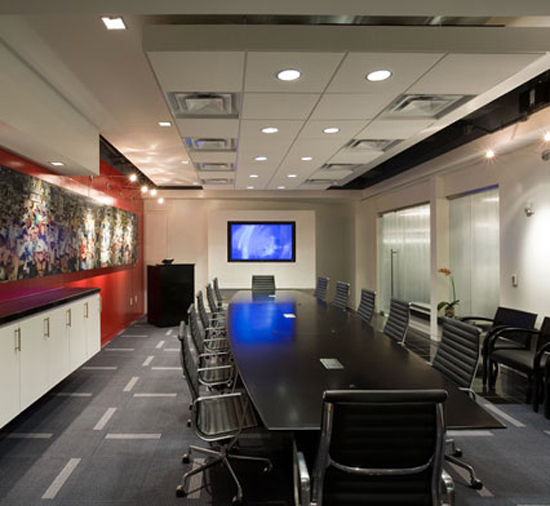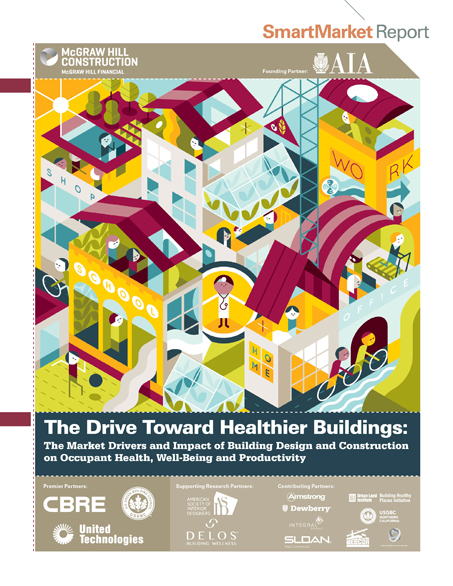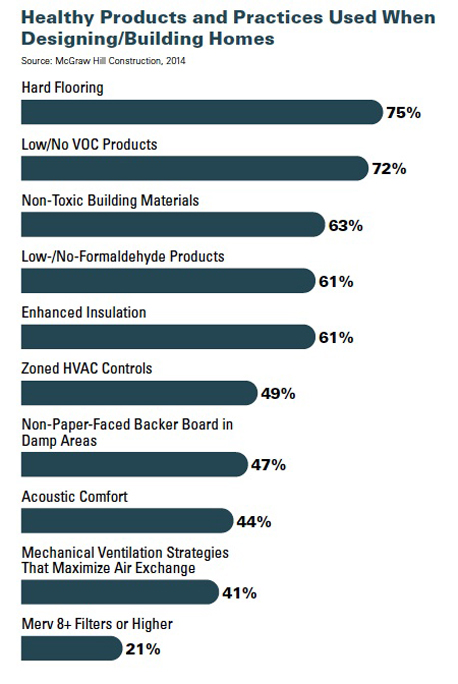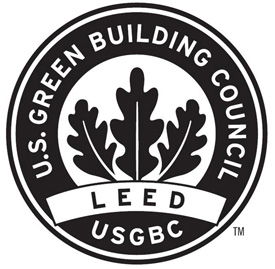Gypsum’s Role in Earning Points in LEED v4 EQ, and Other Credits
Finally, other LEED credits the use of gypsum can help along—from recycled materials to regional manufacturing—will be discussed.
Let’s begin with an overview of changes to LEED v4.
Overview of Changes to LEED v4
For many of us, life before LEED is a dim memory. The rating system has become so ingrained in the collective vernacular that it’s hard to imagine that its innovators, the U.S. Green Building Council, did not even exist prior to 1993. It was Rick Fedrizzi, David Gottfried and Mike Italiano who established USGBC®2 with a simple mission: to promote sustainability in the building and construction industry. Fedrizzi is the organization’s current president and CEO.
“That April,” states the council’s website, “representatives from approximately 60 firms and a few nonprofit organizations met in the boardroom of the American Institute of Architects for the council’s founding meeting. It was there that ideas were first aired for an open and balanced coalition spanning the entire building industry and a green building rating system.”i
The group unveiled LEED in March of 2000 after several years of group consensus work. Today, the Washington, D.C.-based USBGC has 76 chapters, 13,000 member companies and organizations and more than 181,000 professionals who hold LEED professional credentials.
The mission as stated today has expanded from the original to now read: “To transform the way buildings and communities are designed, built and operated, enabling an environmentally and socially responsible, healthy, and prosperous environment that improves the quality of life.”ii
Despite ups and downs of the economy, millions of square feet of space continue to be built to LEED standards. In just one month—October 2014—some 54.8 million square feet of space was LEED certified, including 20 new schools, 16 new retail locations and 172 new commercial buildings. Newly certified projects include the LEED Silver® Georgia World Congress Center, making it the largest LEED-certified convention center in the world. In Ohio, the 639,000 square feet of the Goodyear Tire & Rubber Co.’s global headquarters was LEED certified to the Gold level.
The latest update of LEED, known as LEED v4, was introduced in November 2013 at the USGBC’s Greenbuild International Conference & Expo in Philadelphia. The biggest shifts are:
New market sectors that include data centers, warehouses and distribution centers, hotels, existing schools and existing retail. Also, LEED for Building Design and Construction: Homes and Multifamily Lowrise expands to include mid-rise buildings.
Increased technical rigor, including revisions to credit weights, new credit categories focusing on integrative design, life-cycle analysis of materials, and an increased emphasis on measurement and performance.
LEED v4 emphasizes exceptional scrutiny and transparency for product ingredients, and a hitherto unrequired life-cycle analysis for building products and their energy and environmental impacts. Products can be verified by qualified third parties using science-based measuring tools. As usual, LEED attempts to push the market forward, and building material manufacturers who comply with LEED’s requirements will attract the attention of owners and design teams seeking LEED certification.
For building products manufacturers, there is less emphasis on material resources (MR) and a new emphasis on transparency —What is in the product, and how does it affect human and planetary health?
Indoor Environmental Quality and Human Health

Photo courtesy of National Gypsum
The quality of indoor air has a massive impact on human health.
With buildings becoming tighter and tighter to limit air and energy leakage, LEED v4 brings a sharpened focus on the healthiness of indoor air and what toxins and pollutants are being brought into the air. The emphasis is on source control of indoor toxins, eliminating them from the beginning, rather than on air cleaning strategies or even materials that claim to scavenge toxins from the air.
Studies show an increasing interest on the impacts of buildings on human health. But while architects have led the charge for healthier buildings, some players involved in the health and sickness industry lag behind.

Image courtesy of McGraw Hill Construction
A recent Smart Market Report from McGraw Hill Construction found that while architects have a great awareness of building on human health, that awareness is largely absent in family doctors and general practitioners.
A ground-breaking new study by McGraw Hill Construction titled: “The Drive Toward Healthier Buildings: The Market Drivers and Impact of Building Design on Occupant Health, Well-Being and Productivity,”iii discovered only 32 percent of family doctors and general practitioners believe that buildings impact patient health.
The results of the study—which was produced in cooperation with AIA, United Technologies, USBGC and other partners—contrast with the 62 percent of homeowners who believe the practices and products used in the home affect their family’s health.
In the 100-page report, co-leaders Harvey M. Bernstein and Michele A. Russo, both LEED APs®, suggest that these three triggers spur higher levels of healthy building activity:
• Greater public awareness of the health impacts of buildings
• Creation of better tools and methodologies to collect data and measure health impacts to help justify investments
• Codes and incentives that encourage building practices
Of all the players involved in building design and construction, architects consistently report higher levels of use of nearly all the healthy building products included in the survey. Two of the healthiest building products—hard flooring and low/no-VOC products—are specified or used by more than 70 percent of building industry professionals.
Specified or used by more than 50 percent of those surveyed are non-toxic materials, low- or no-formaldehyde products and enhanced insulation.

Source: McGraw Hill Construction
Percentages of healthy products and practices used when designing and building homes.
2 USGBC® and the related logo are trademarks owned by the U.S. Green Building Council.










